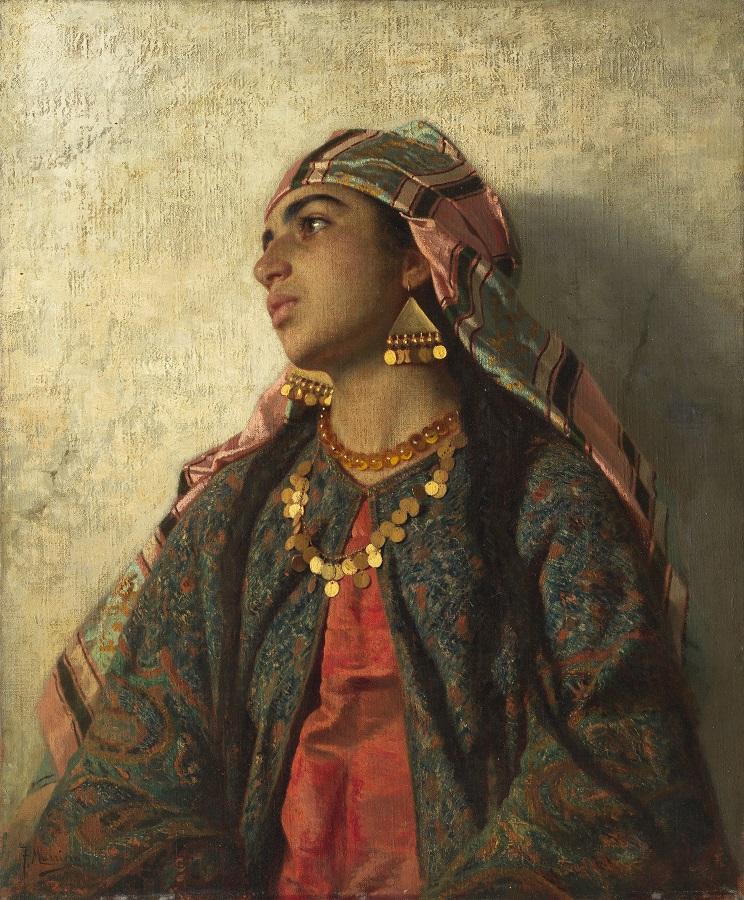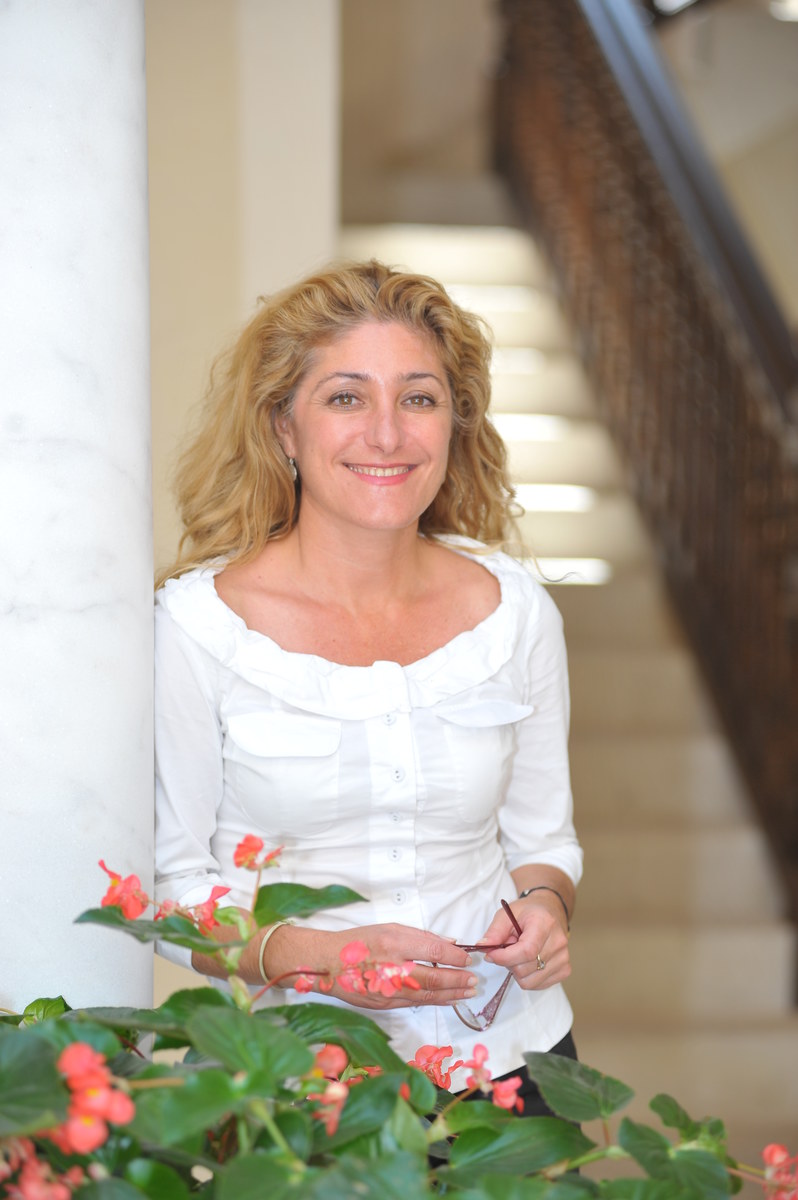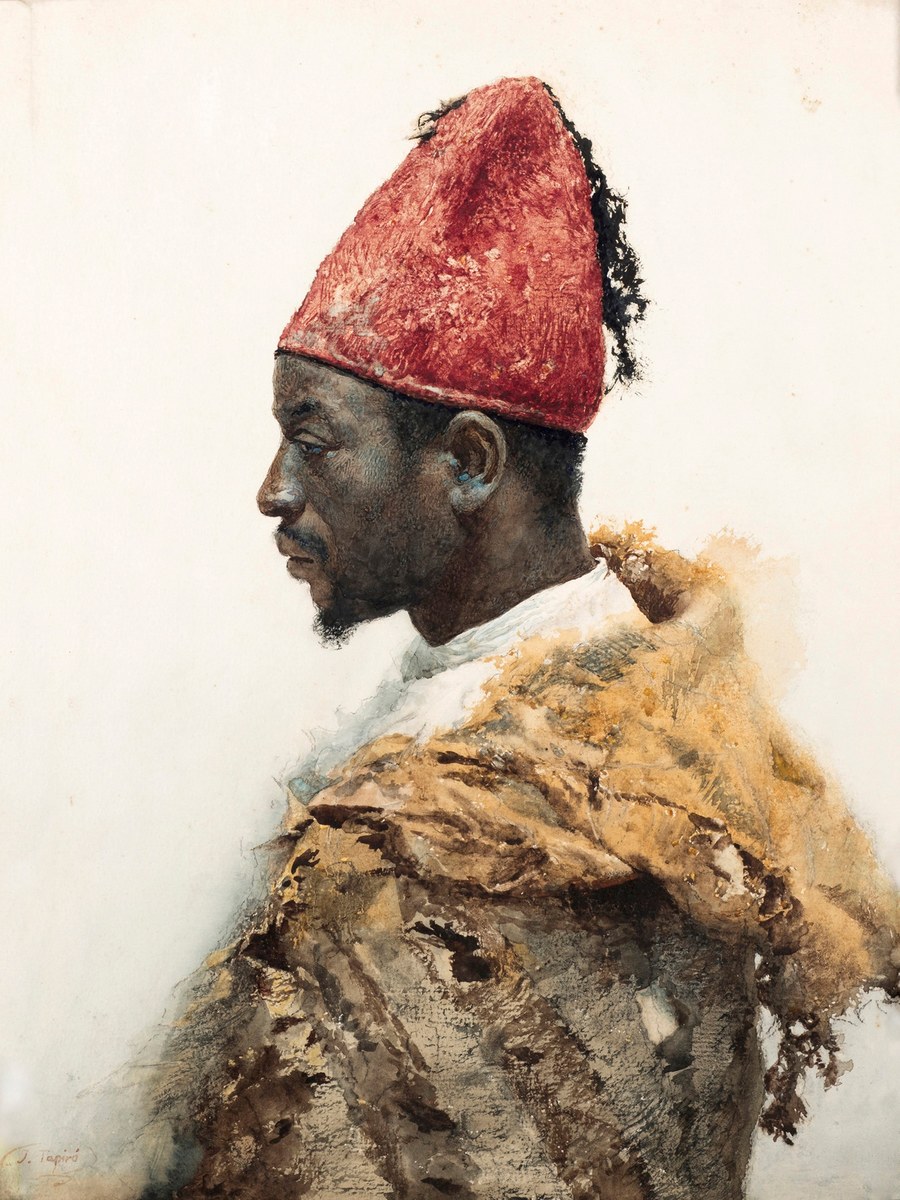MALAGA: When we think of Orientalism — the much-studied and, now, often-derided artistic genre through which colonial-era artists created fantasized imagery of the faraway lands of the East — French titans Eugène Delacroix and Jean-Léon Gérôme’s odalisques, slave markets and hamams usually come to mind.
However, an exhibition at the Carmen Thyssen Museum in Malaga sheds light on how Spanish painters of the 19th century also expressed great interest in this region, depicting a variety of landscapes and combative and figurative compositions inspired mostly by North Africa.

An exhibition at the Carmen Thyssen Museum in Malaga sheds light on how Spanish painters of the 19th century. (Supplied)
“Fantasía Árabe” (Arabian Fantasy), which runs until the first of March, is the first show of its kind at the museum, and showcases more than 80 elaborate oil paintings and intimate watercolors from its collection, along with loaned. Visitors can also observe a few period objects — daggers, drums, ceramics, and old photographs — that have mostly come from the Maghreb. Some of these items were actually collected by the artists themselves, and used as a source of inspiration for their artworks. Co-curated by the museum’s longtime artistic director Lourdes Moreno, the exhibition is split into three sections: landscape scenery, figurative and fantasy-themed imagery, and portraiture.
Although Spanish orientalists such as Marià Fortuny, Josep Tapiró and Francisco Lameyer are generally lesser known than their French counterparts, Moreno believes they nevertheless belonged to the “international mainstream” of artists at the time. She sees no major stylistic differences in how the French and Spanish approached Orientalist themes; both focused on depictions of snake charmers and folklore, and were equally enthralled by the elements of mystery, fantasy, and the exotic.
Historically speaking, what differentiated North Africa’s relationship with Spain from any other European country is the influential presence of Moorish history, design and architecture through long-standing Arab rule in Andalusia. “Spain has, of course, a special connection with Arabic topics, whether cultural and historical, in the past, over a period of 831 years,” Moreno told Arab News.

The exhibition is co-curated by the museum’s longtime artistic director Lourdes Moreno. (Supplied)
The displayed works were created in a critical period between 1860 and 1900. “It was the most important period for orientalist painters. This period was like the maturity phase in this kind of painting, which was very rich and had different styles, like Romantic and academic. Delacroix, who was a Romantic painter, started painting in about 1832, and by 1900, this painting style had a change of quality,” Moreno explained.
The Hispano-Moroccan War of 1859-60, which resulted in Morocco seeking peace after Spain declared victory at the Battle of Tetuán, was a major event that sparked the imagination of these artists, she pointed out. Among them was the Catalan artist Marià Fortuny, who is considered a pioneer of Spanish Orientalist painting.
Trained in academic painting in Rome, Fortuny received the opportunity of a lifetime — granted by the provincial council in Barcelona — to become a war artist in his early twenties: “Fortuny went to Morocco three times — in 1860, 1862, and 1871 — because they wanted him to paint images of this historical war,” Moreno said. “He was like a war journalist.”
Settling in Tetuan, a mountainside town in northern Morocco, Fortuny was inspired by this landscape, leading him to create several sketches that ultimately manifested in the form of a monumental painting, “The Battle of Tetuan” (1862-4). A lively scene of galloping Moroccans and attacking Spaniards, Fortuny’s symbolic commission represented the idea that “Spanish authorities were logically interested in conveying a heroic image of the Spanish troops’ feats of war,” according to co-curator Francesc Quílez.

The exhibition expressed great interest in this region, depicting a variety of landscapes and combative and figurative compositions inspired mostly by North Africa. (Supplied)
Away from politics and warfare, beautiful portraits of Moorish men and women make a significant appearance in this display. In fact, the exhibition has been marketed to the public with a little-known dreamy 1880s portrait (entitled “Muchacha Mora”) by Francesc Masriera — who never visited North Africa — of a Moorish girl adorned with Oriental jewelry and clothing, gazing away from the viewer.
Orientalism remains controversial — with many seeing it as condescending and patronizing — but its artworks are still in demand, with auction houses selling them at significant prices to private collectors and museums. And Moreno believes that the artists are often harshly judged.
“There are different theories about Orientalism: Sometimes it’s true that the artists from the Occident obviously used their own point of view, but they also wanted to show to the European public the differences of another fascinating culture’s smells, colors, and clothes,” she said. “It wasn’t always political: these artists felt like travelers and were sympathetic towards, and curious about, this kind of culture.”












